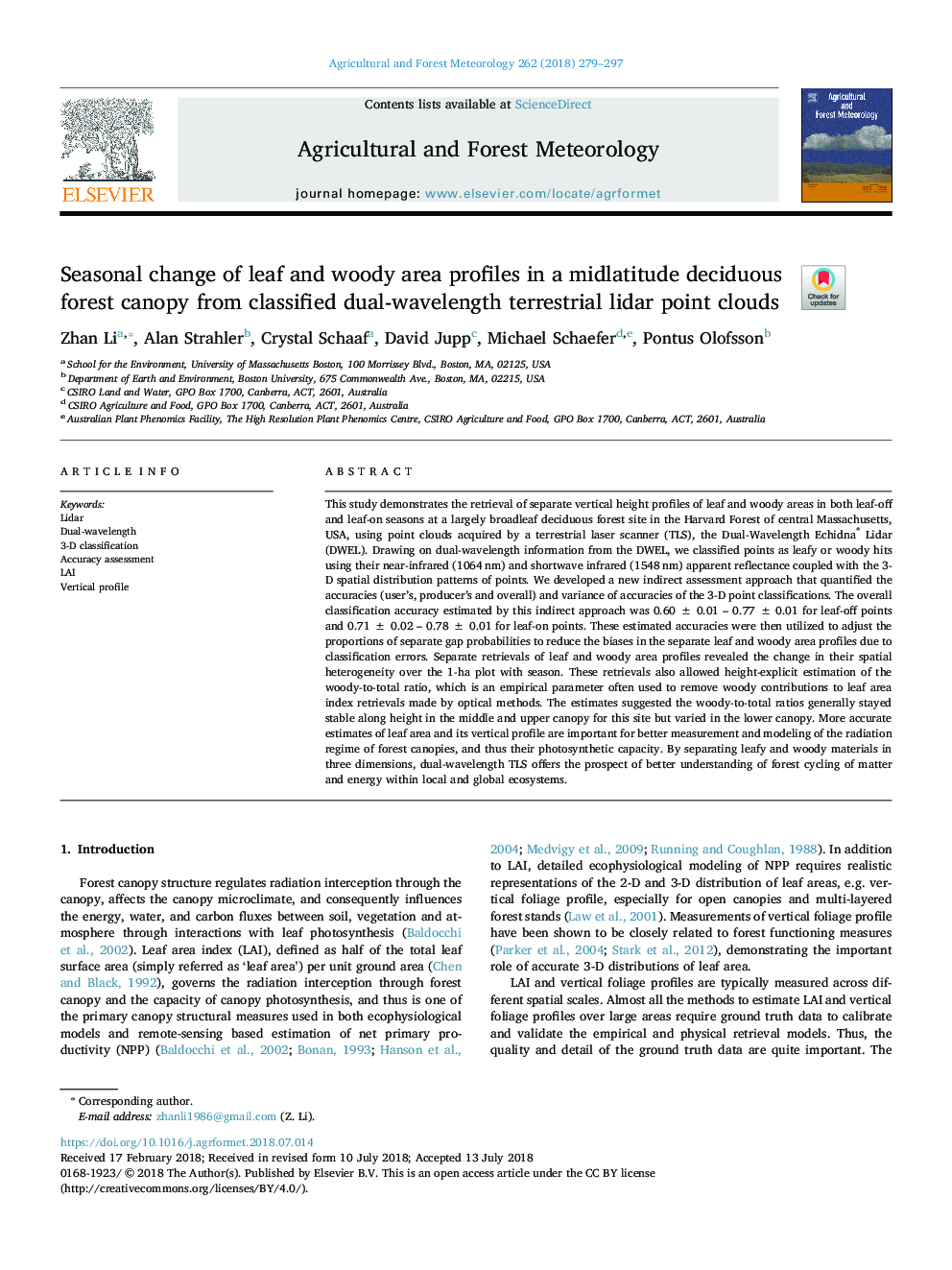| کد مقاله | کد نشریه | سال انتشار | مقاله انگلیسی | نسخه تمام متن |
|---|---|---|---|---|
| 6536584 | 1420843 | 2018 | 19 صفحه PDF | دانلود رایگان |
عنوان انگلیسی مقاله ISI
Seasonal change of leaf and woody area profiles in a midlatitude deciduous forest canopy from classified dual-wavelength terrestrial lidar point clouds
ترجمه فارسی عنوان
تغییر فصلی پروفیل های سطح برگ و مسطح در یک سایبان جنگلی با ارتفاع زیاد از طبقه های دوبعدی زمین لیدار زمین
دانلود مقاله + سفارش ترجمه
دانلود مقاله ISI انگلیسی
رایگان برای ایرانیان
کلمات کلیدی
موضوعات مرتبط
مهندسی و علوم پایه
علوم زمین و سیارات
علم هواشناسی
چکیده انگلیسی
This study demonstrates the retrieval of separate vertical height profiles of leaf and woody areas in both leaf-off and leaf-on seasons at a largely broadleaf deciduous forest site in the Harvard Forest of central Massachusetts, USA, using point clouds acquired by a terrestrial laser scanner (TLS), the Dual-Wavelength Echidna® Lidar (DWEL). Drawing on dual-wavelength information from the DWEL, we classified points as leafy or woody hits using their near-infrared (1064â¯nm) and shortwave infrared (1548â¯nm) apparent reflectance coupled with the 3-D spatial distribution patterns of points. We developed a new indirect assessment approach that quantified the accuracies (user's, producer's and overall) and variance of accuracies of the 3-D point classifications. The overall classification accuracy estimated by this indirect approach was 0.60â¯Â±â¯0.01 - 0.77â¯Â±â¯0.01 for leaf-off points and 0.71â¯Â±â¯0.02 - 0.78â¯Â±â¯0.01 for leaf-on points. These estimated accuracies were then utilized to adjust the proportions of separate gap probabilities to reduce the biases in the separate leaf and woody area profiles due to classification errors. Separate retrievals of leaf and woody area profiles revealed the change in their spatial heterogeneity over the 1-ha plot with season. These retrievals also allowed height-explicit estimation of the woody-to-total ratio, which is an empirical parameter often used to remove woody contributions to leaf area index retrievals made by optical methods. The estimates suggested the woody-to-total ratios generally stayed stable along height in the middle and upper canopy for this site but varied in the lower canopy. More accurate estimates of leaf area and its vertical profile are important for better measurement and modeling of the radiation regime of forest canopies, and thus their photosynthetic capacity. By separating leafy and woody materials in three dimensions, dual-wavelength TLS offers the prospect of better understanding of forest cycling of matter and energy within local and global ecosystems.
ناشر
Database: Elsevier - ScienceDirect (ساینس دایرکت)
Journal: Agricultural and Forest Meteorology - Volume 262, 15 November 2018, Pages 279-297
Journal: Agricultural and Forest Meteorology - Volume 262, 15 November 2018, Pages 279-297
نویسندگان
Zhan Li, Alan Strahler, Crystal Schaaf, David Jupp, Michael Schaefer, Pontus Olofsson,
